6 strategies for finding the perfect crop for your block
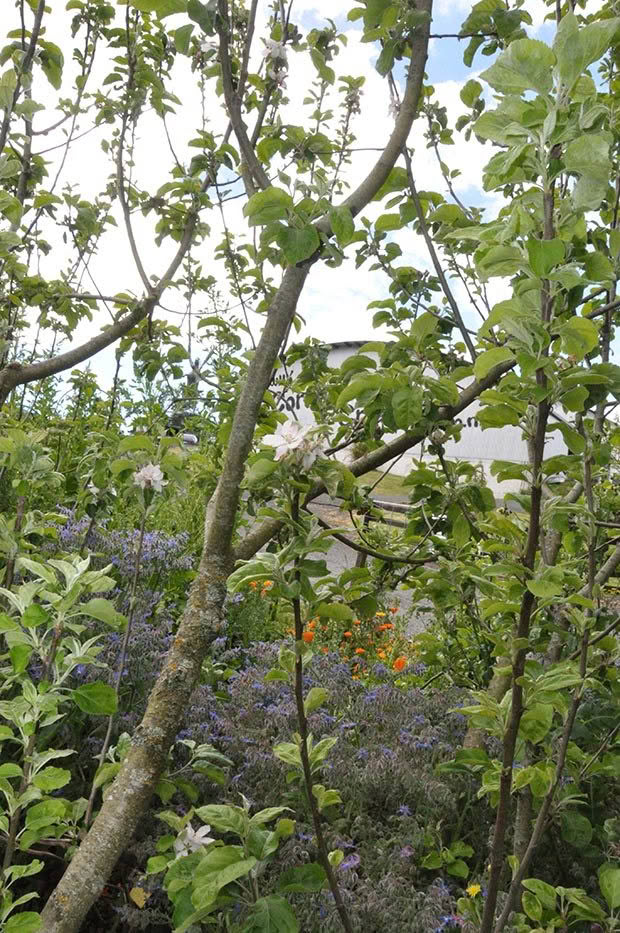
Moving to a new block is an exciting time, but it’s easy to get carried away. Before you get started, take a little time to think strategy.
Words and photos: Sheryn Dean
You made your move, bought a slice of Aotearoa, you are living the dream. But now you want to know what to do with it. You’re not alone. Most people usually know if they want the commitment of livestock, what animals they want, and have a broad idea about planting ‘some trees’ without knowing what to plant. Planting ad hoc with no plan or purpose like throwing in a lot of natives can cause you a lot of work or regrets in the long term.
Every tree you plant should serve several purposes: aesthetics, shelter, land improvement, livestock or bee fodder, a timber crop, food produce, and possibly an income. But even if you narrow it down to just a productive tree, there is still a confusing amount of choice available.
The following considerations may assist with this decision, but please note that the specific crop suggestions are examples only. You will need to do your own research on what will work in your area, and then make your own decisions.
1. WHAT HAVE YOU GOT
This is the most important factor but it’s one that is often overlooked. For example, tamarillos do not grow in frosts and walnuts suffer from blight in humidity. Don’t fight Mother Nature to grow something unsuited to your land.
You need to analyse your climate, soil, drainage, water supply and the meso and micro climates to help you compile a list of possibilities. You want crops that like your situation or you will need to factor in a higher risk or higher set-up costs to create an artificial environment.
The best way to see what suits your area is to look around and see what is growing. Join the local branch of the NZ Tree Crops Association and go on their field days to visit other properties. Ask questions. Ask everyone and you will get lots of conflicting, confusing information, but amongst it will be the gems you seek.
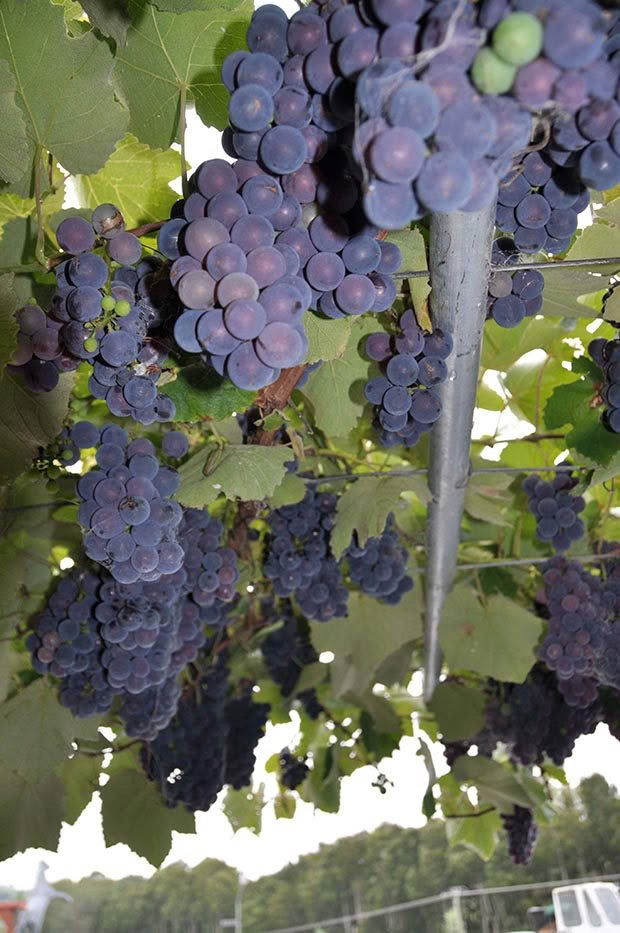
Grapes hanging down from an overhead frame seem to avoid bird damage and provide welcome shade.
2. WHAT DO YOU WANT
Make the wish list. You can’t have it all so prioritise what is important to you and what your current and foreseeable circumstances are going to be.
– Do you want a profit-making business? What sort of returns do you need and what risks are you prepared/can you afford to take? Do a business plan.
– Do you want eventual self-employment? If so, do you want one or more yearly crops intermixed to spread the risk and utilise space?
– Do you need a steady, weekly income? Perhaps growing a range of crops for a farmer’s market is the answer.
– Do you want an interesting, self-supporting outside hobby where profit is a bonus rather than an essential element? That might mean something like olives or lavender.
– Do you want to create a long-term but low maintenance income for your retirement? That could be walnuts or hazels.
– Do you want to create an asset for your children? Think long-term crops like timber or truffles.
– Do you want to grow wholesome food for your family? That’s easy: you need a home orchard.
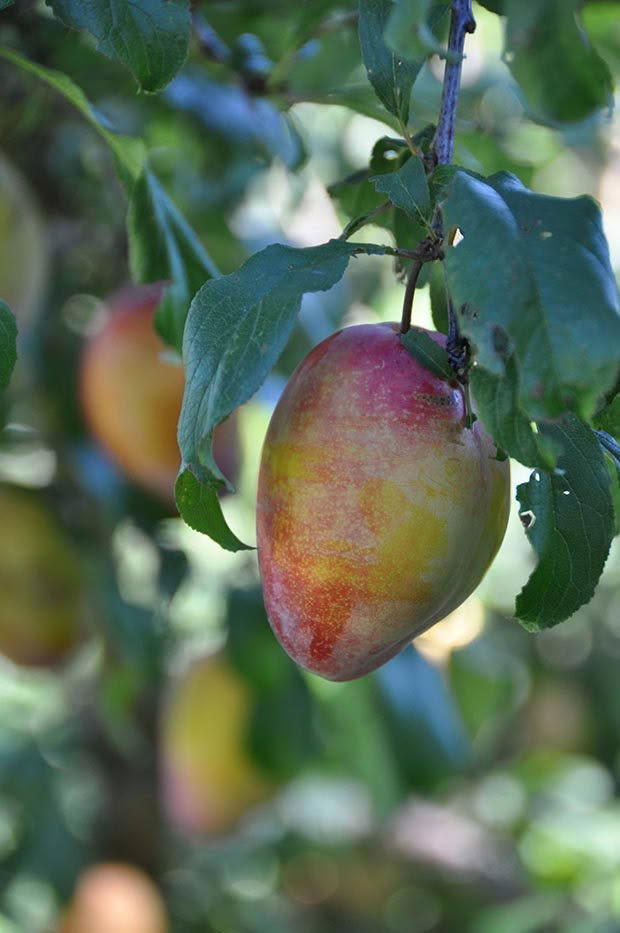
The Louisa plum (planted above a rather expensive, deceased milking cow) flourished the first couple of years and provided huge orbs of juicy fruit. Unfortunately the 2011 crop didn’t seem to ripen, and the 2012 crop wasn’t bountiful – hopefully these are seasonal issues only.
3. HOW MUCH ARE YOU WILLING TO INVEST
This means money to establish yourself, but also the less obvious costs like time. Mowing, pruning, spraying and harvesting all take time, and some crops are more intensive than others.
Soft fruit have an annual programme that is concentrated during harvesting. Nuts are less labour intensive, while niche crops in glasshouses are a demanding commitment.
Do the maths and be realistic about your time investment so you can ensure the returns are worthwhile. When costing out your equipment, look at the economies of scale. If specialised equipment is needed, will a larger plantation be more economic? If you are planning mixed crops, is the equipment versatile?
4. WHAT IS YOUR MARKET
This is the biggie. If there is a financial consideration to your venture then this is the question you really need to research. How much effort are you prepared to put into processing, adding value, marketing and selling your produce?
Do you want to do it all yourself? Do you want to invest in a commercial kitchen, make jam and then take it to sell at a farmer’s market? Or do you just want to harvest and sell your crop?
Many small-scale growers have spent time working on this issue. They are forming co-operatives to share processing equipment, for example, there are various lavender stills available for hire, and there are independent organisations assisting with the marketing of crops like walnuts, feijoas, tamarillos and citrus.
Contract growing provides some certainty, but can also be risky: ask the people growing ginkgo who were left severely out of pocket after the agent went bust.
Research your market and decide how you are going to sell your crop before you invest a cent, then research alternative options, just in case. Are there any?
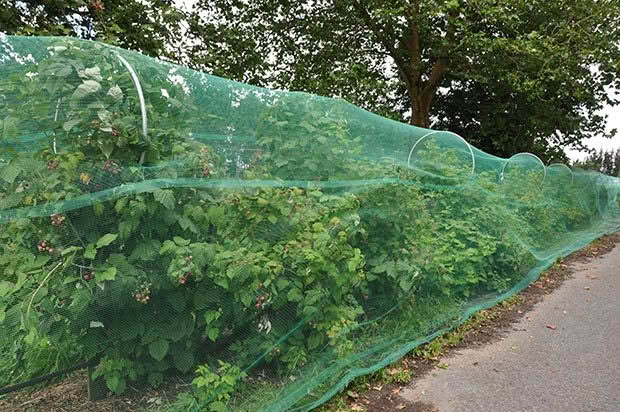
Raspberries are ripening by the bowlful right on Christmas, a very welcome start to the harvest season. But the birds think so too. Before we got the net, we would only ever get to eat the yellow Ivory variety – the birds ate the rest before we even saw them.
Even established crops have a risk attached. NZ apple production has declined dramatically in recent years, and several years ago I saw huge amounts of apricots left to rot as it was just not economical to harvest them. Niche crops like the dragon fruit or gevuinas require you to go it alone.
You have to create and educate the market, do all the processing, marketing and selling. Are you prepared for that? The trick to it is guessing the demand in the future when your crop will be ready.
But whatever you do, do your homework. It is no use growing anything, no matter how well you do it, unless you can sell it.
5. HOW MUCH RISK ARE YOU PREPARED TO TAKE
Most crops have a time period between establishment costs and harvesting returns, and the big risk is that the market can change in this time.
All crops carry a weather-dependant risk, some more than others, and global warming may bring even more extremes. This is why you need to be realistic and not budget for the best-case scenario.
Is there a biosecurity risk? Chestnut blight is prevalent in Europe and Australia has just fought an outbreak. Could an international disease threaten your crop? Could a change to import rules allow cheaper competition into your market?
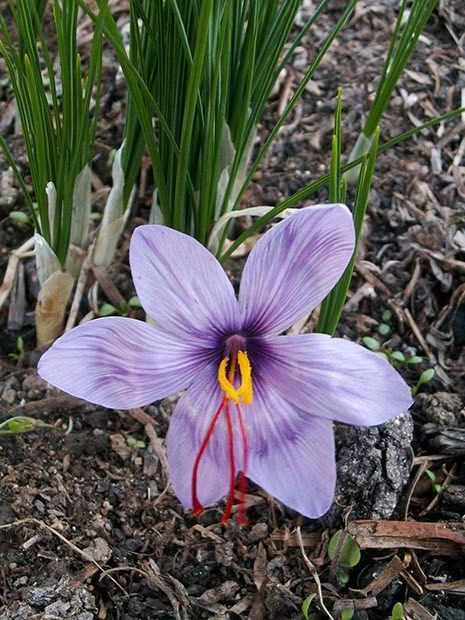
Saffron is a niche crop that needs very particular growing conditions, and a grower with an eye for minute detail.
6. FIND YOUR PASSION
Last, but not least, it is important to pursue a crop you enjoy. If you enjoy flowers, peace and minute detail, you’d probably like growing saffron. If operating machinery, building frames and a pruning/maintenance schedule is your thing then maybe nashi or a soft fruit is best.
If you enjoy masses of spring blossoms, try almonds or cherries. If it is large trees you appreciate, go for pecans or chestnuts.
Or do you like to be experimental and at the investigative edge? You might want to try goji berries or karaka. Do it because you enjoy it and you will profit in the good times but still enjoy it in the bad.
SHERYN’S ADVICE
When people ask my advice on what crops to grow, I tell them to do their research, to take their time, to look around and to ask, ask and ask those who have been there and done it before.
Whatever you do, growing trees is a long-term investment. If you have the time and are dithering between a few possibilities, throw in some specimens now while you are researching. If some flourish while others need more TLC than you are prepared to give, it may help your decision-making. If not, what have you lost?
CASE STUDY: Sheryn’s block
Who: Sheryn Dean
Live: Tirau, 50km south-east of Hamilton
Land: 3.5ha
My former husband and I purchased our block in 2006. Between us we already had three separate businesses and no desire for a fourth. While the temptation was there to do ‘something’ with our block that would contribute towards the mortgage, the reality was we just didn’t have any time available.

A range of citrus provide fresh fruit in the late winter/spring period when fruit is scarce.
We also decided our caretaking of this land would probably be only for 20 years or so. After that, we would probably want the freedom to travel without commitment or to sell our existing businesses and move on.
So income wasn’t essential (though, of course, always preferable), available time was very limited and we had short-term goals only. So why had we bought land?
We wanted fresh, healthy food, an outside, physical hobby to offset our inside jobs, and room for the kids to ride motorbikes, build tree huts, play in the dam and run with the dogs.
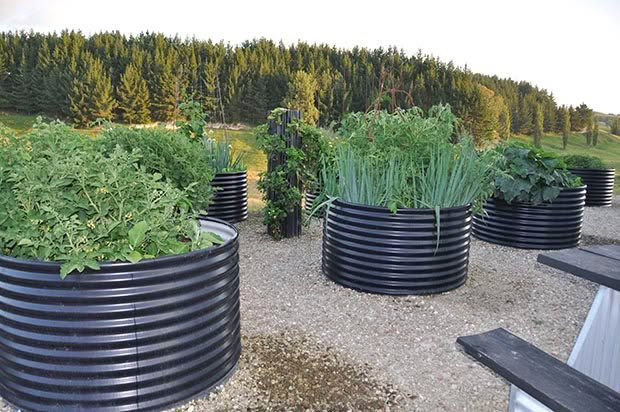
Garlic, onions, potatoes, asparagus and other large veges grow amongst the orchard, ducks and guinea fowl, but salad greens and herbs that you want for dinner are right outside the back door in easy-to-care-for beds raised above the height of passing rabbits and pet sheep.
One of our first steps was to join the Waikato branch of the NZ Tree Crops Association, visit many properties around our region, and to ask lots of questions. It was invaluable. Feedback came in thick and fast. This is some of what we took on board:
– The planned orchard was too big to maintain – halve the size then plant individual trees out in the paddocks;
– Divide stock and tree areas, and separate with (very) good fences;
– Landscape and drain before anything else;
– Plant our own shelter instead of relying on the neighbour’s trees.
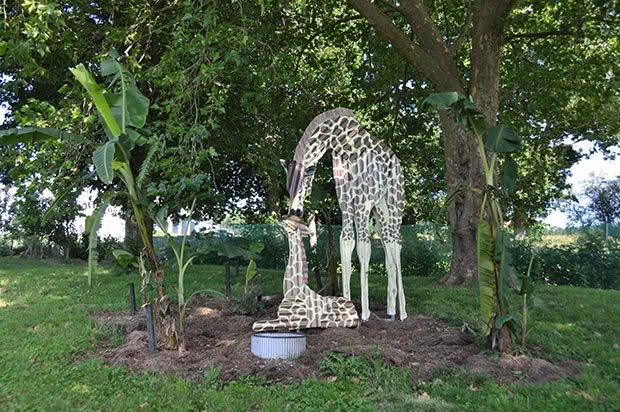
Growing bananas in the Waikato is definitely wishful thinking but experimenting is half the fun. The sculpture is to try and prevent the wind whipping the leaves into strips. Different varieties are being tried. The banana on the far left is the youngest, but the one most resistant to our cold.
But I think the best advice of all was to put things closer together. I had originally planned the orchard here, the cow shed there, the poultry over there, but it’s a much better idea to walk through the orchard to feed the calves and poultry, empty the compost and burn the rubbish. Life is easier.
In retrospect, they were totally right. It’s not only easier, but even in winter I walk past each of my trees at least weekly as I take different routes to do my chores and enjoy each new shoot, note to trim a funny branch or catch any problems in-the-bud (excuse the pun). The need to make systems as efficient as possible is vital as we are both time-poor.
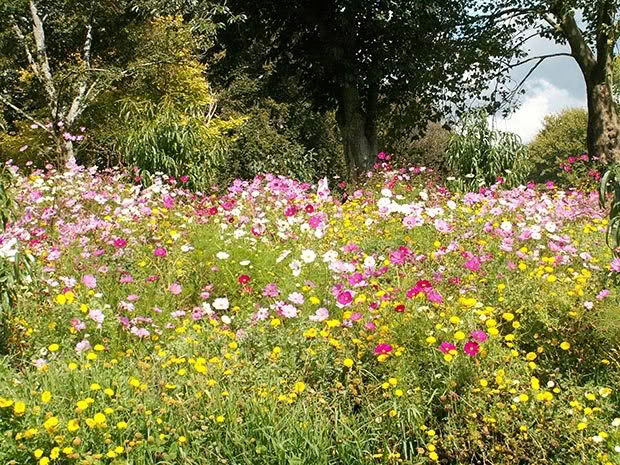
Healthy food is the main goal so I refuse to use any pesticides or herbicides. The borage and marigolds under the apples suppress weeds, provide important November bee food and nurture predator insects to keep the ‘baddies’ under control. And they look pretty.
Now I have over 200 trees planted and all have at least one purpose, but most have several. There’s fresh fruit pretty much all year round and a pantry full of preserves in case I want something out of season.
The vegetable garden almost completely feeds me, and there’s room for enough animals to keep the freezer full.
This was done in the time we had available. There’s always more to do, but I’m now free to do what I want when I want without the pressures of meeting a commercial market.
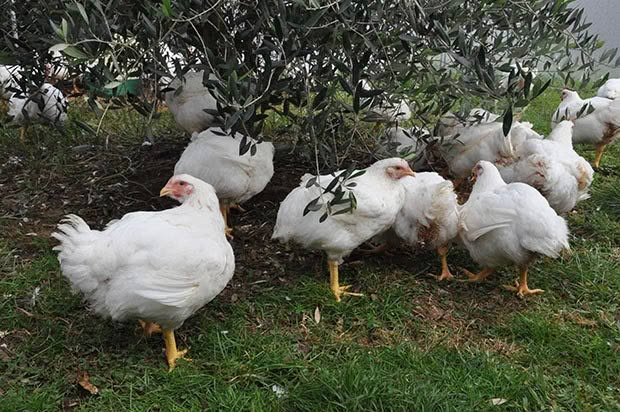
Meat chickens enjoyed the shelter of an olive tree during their short (but happy) lives.
I like the complexity of learning about all the different aspects of growing different trees, plants and livestock, and the variety and challenges of such an integrated system. But I hear you saying it does not make any money. No, it doesn’t, but it saves me a lot which is just as good.
I feast like a king on organic natural food with living expenses so low the bank manager doesn’t believe them. Best of all, I love it. It’s fun and enjoyable without any pressure, and that’s just what I wanted.

Love this story? Subscribe now!
 This article first appeared in NZ Lifestyle Block Magazine.
This article first appeared in NZ Lifestyle Block Magazine.
